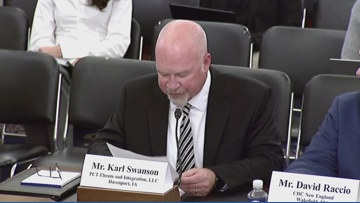Analysis of Colorado Higher Education Institutions in Relation to Sustainable Development Goals
A 2025 report by Money magazine on America’s best colleges provides critical data for evaluating the performance of Colorado’s higher education sector against key United Nations Sustainable Development Goals (SDGs). The analysis, which scored over 700 institutions, highlights how universities contribute to SDG 4 (Quality Education), SDG 8 (Decent Work and Economic Growth), and SDG 10 (Reduced Inequalities).
Ranking Methodology and Alignment with SDG 4 (Quality Education)
The evaluation framework used by Money magazine directly reflects the principles of SDG 4, which advocates for inclusive and equitable quality education. Institutions were assessed on a combination of factors that measure educational efficacy and student success.
Core Assessment Categories:
- Quality of Education: This metric, focusing on factors like graduation rates, aligns with SDG 4’s target to ensure effective learning outcomes.
- Affordability: By considering the cost of attendance after financial aid, the ranking addresses SDG 4’s goal of making tertiary education accessible and affordable. This also supports SDG 10 (Reduced Inequalities).
- Student Outcomes: Measuring graduate debt load and future earning potential directly connects to SDG 8 (Decent Work and Economic Growth), as education is a primary driver of productive employment.
Institutional Performance and Contribution to SDGs
While no Colorado university received the highest possible rating, several institutions demonstrated a strong commitment to outcomes that support sustainable development.
Colorado School of Mines: A Case Study in SDG Achievement
Colorado School of Mines was ranked as the top university in the state with a 4.5-star rating. Its performance illustrates a direct contribution to several SDGs:
- SDG 4 (Quality Education): The institution’s high graduation rate of 84% indicates a successful and effective educational environment.
- SDG 8 (Decent Work and Economic Growth): Graduates report typical early career annual earnings exceeding $97,000, demonstrating the university’s role in preparing students for high-value, decent work that fuels economic growth.
- SDG 10 (Reduced Inequalities): With an estimated cost of attendance under $32,000 after average financial aid, the university makes elite technical education more accessible, thereby helping to reduce economic and social inequalities.
The university was also recognized among the best public colleges and best colleges in the West, underscoring its regional and national importance in advancing these goals.
Other High-Performing Institutions
Colorado State University and Regis University both received four-star ratings. This indicates a broader capacity within the state’s higher education landscape to provide quality education and foster positive economic outcomes, in line with the objectives of SDG 4 and SDG 8.
Overall Findings and Implications for Sustainable Development
The report’s findings on Colorado colleges underscore the integral role of higher education in achieving a sustainable future. The data provides a clear link between institutional performance and progress on global development targets.
- The emphasis on graduation rates and educational quality is a direct measure of progress toward SDG 4 (Quality Education).
- The focus on graduate earning potential confirms that quality higher education is a critical pathway to achieving SDG 8 (Decent Work and Economic Growth) and contributing to SDG 1 (No Poverty).
- The inclusion of affordability metrics highlights the importance of financial accessibility in promoting SDG 10 (Reduced Inequalities), ensuring that opportunities for advancement are available to a wider population.
Analysis of SDGs, Targets, and Indicators in the Article
1. Which SDGs are addressed or connected to the issues highlighted in the article?
The article on Money magazine’s college rankings addresses several Sustainable Development Goals by focusing on the quality, affordability, and outcomes of higher education.
-
SDG 4: Quality Education
This is the most prominent SDG in the article. The entire piece revolves around evaluating the “quality of education” offered by colleges and universities in Colorado. It uses a rating system (stars) and various metrics to assess and compare higher-education institutions.
-
SDG 8: Decent Work and Economic Growth
The article connects education directly to employment outcomes. It highlights “future earning potential” and “typical early career annual earnings” for graduates as key factors in its rankings, linking educational attainment to economic prosperity and decent work.
-
SDG 1: No Poverty
By considering “affordability,” “cost of attendance after average financial aid,” and “debt load for graduates,” the article touches upon the economic barriers to education and the financial burdens that can affect students’ long-term economic stability. High student debt can be a significant factor contributing to financial hardship.
-
SDG 10: Reduced Inequalities
The article implicitly addresses this goal by evaluating factors that promote equal opportunity. By analyzing affordability and distinguishing between public and private institutions, the rankings provide information that can help students from diverse socioeconomic backgrounds access quality education, thereby helping to reduce inequalities of outcome.
2. What specific targets under those SDGs can be identified based on the article’s content?
Specific targets can be identified by mapping the article’s core themes to the official SDG framework.
-
SDG 4: Quality Education
- Target 4.3: By 2030, ensure equal access for all women and men to affordable and quality technical, vocational and tertiary education, including university.
Explanation: The article’s focus on ranking universities based on “affordability” and “quality of education” directly aligns with this target of ensuring access to quality and affordable tertiary education. - Target 4.4: By 2030, substantially increase the number of youth and adults who have relevant skills, including technical and vocational skills, for employment, decent jobs and entrepreneurship.
Explanation: The emphasis on “future earning potential” and high salaries for graduates of institutions like the Colorado School of Mines implies that these schools provide students with relevant skills for high-value employment.
- Target 4.3: By 2030, ensure equal access for all women and men to affordable and quality technical, vocational and tertiary education, including university.
-
SDG 8: Decent Work and Economic Growth
- Target 8.5: By 2030, achieve full and productive employment and decent work for all women and men… and equal pay for work of equal value.
Explanation: The article’s use of “early career annual earnings” as a metric supports this target by measuring the economic value of the jobs graduates obtain. - Target 8.6: By 2020, substantially reduce the proportion of youth not in employment, education or training.
Explanation: The article highlights high “graduation rates” (e.g., 84% for Mines), which is a crucial first step to ensuring graduates are prepared to enter the workforce and not become part of the “not in employment, education or training” (NEET) statistic.
- Target 8.5: By 2030, achieve full and productive employment and decent work for all women and men… and equal pay for work of equal value.
-
SDG 1: No Poverty
- Target 1.2: By 2030, reduce at least by half the proportion of men, women and children of all ages living in poverty…
Explanation: The article’s consideration of “debt load for graduates” is relevant to this target. Minimizing student debt is a key factor in preventing graduates from falling into financial hardship or poverty after completing their education.
- Target 1.2: By 2030, reduce at least by half the proportion of men, women and children of all ages living in poverty…
3. Are there any indicators mentioned or implied in the article that can be used to measure progress towards the identified targets?
Yes, the article mentions several specific data points that Money magazine uses in its ranking methodology, which can serve as indicators for the identified targets.
-
Indicators for SDG 4 (Quality Education)
- Graduation rates: The article explicitly states the “graduation rate of 84%” for Colorado School of Mines. This is a direct measure of educational attainment and quality (Indicator 4.1.2 framework).
- Cost of attendance after financial aid: The mention of an “estimated cost of attendance after average financial aid a little under $32,000” serves as an indicator for affordability (Target 4.3).
- Quality rating: The star ratings (e.g., “4.5 stars”) are a composite indicator used to measure the overall quality of the institution.
-
Indicators for SDG 8 (Decent Work and Economic Growth)
- Early career annual earnings: The figure of “above $97,000 for graduates” of Mines is a direct indicator of the economic outcome of education and the value of skills in the labor market (Target 8.5).
-
Indicators for SDG 1 (No Poverty)
- Debt load for graduates: The article states that “debt load for graduates” is one of the 25 factors considered. This is a direct indicator used to measure the financial burden placed on students, which relates to future poverty risk (Target 1.2).
4. Summary Table of SDGs, Targets, and Indicators
| SDGs | Targets | Indicators Identified in the Article |
|---|---|---|
| SDG 4: Quality Education | Target 4.3: Ensure equal access to affordable and quality tertiary education. |
|
| Target 4.4: Increase the number of youth and adults with relevant skills for employment. |
|
|
| SDG 8: Decent Work and Economic Growth | Target 8.5: Achieve full and productive employment and decent work. |
|
| Target 8.6: Reduce the proportion of youth not in employment, education or training. |
|
|
| SDG 1: No Poverty | Target 1.2: Reduce the proportion of people living in poverty. |
|
| SDG 10: Reduced Inequalities | Target 10.3: Ensure equal opportunity and reduce inequalities of outcome. |
|
Source: coloradoan.com







